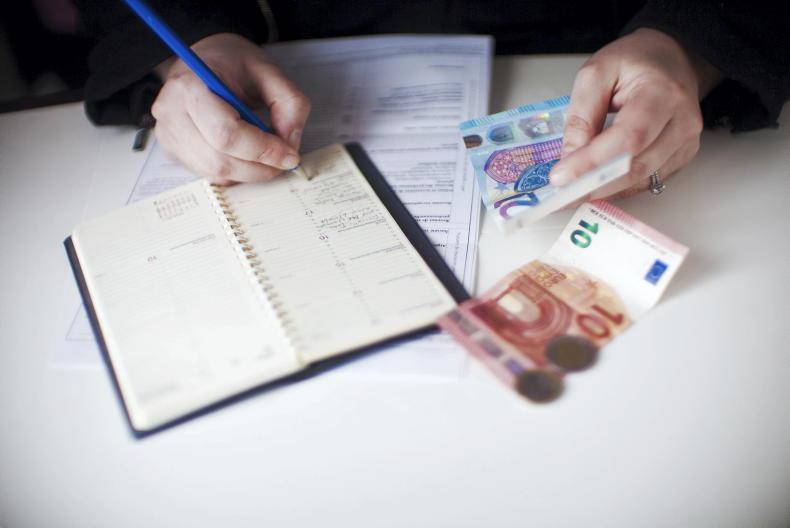Question: We’ve just received a significant sum of money through inheritance. While this is a good problem to have, we’re feeling overwhelmed trying to decide what to do with it. There are so many options out there and it’s hard to know where to start.
Our overall goal is to make the most of the money, but we’re also keen to maintain some access to the funds in case of emergency expenses. The flip side is that if we don’t put it away, inflation could just eat into its value. Is there a way to balance security and easy access on one side with growth on the other?
We don’t want to make any hasty decisions so we would appreciate some guidance on how to divide it wisely.
Answer: Figuring out what to do with a large sum of money might be a good problem, but it’s also a big deal. Step back and ask yourself this question: ‘What is my money for and when do I expect to need it?’ The answer will give you guidance as to the type of accounts that are best suited to you. Here’s a game plan that might help.
Don’t rush: You want to avoid making emotional or impulsive choices – give yourself time. You might consider speaking with a financial advisor – they can take a look at your broader financial situation and give you clear advice.
Weigh up your options: When you see the level of interest that’s on offer from deposit providers, it’s no surprise that you’re asking what you should do. Inflation in Ireland has calmed to a current rate of 1.7%, but it was as high as 9.2% in October 2022. If your new money isn’t keeping pace with inflation, then you’re losing buying power in real terms. You want to avoid that if you can.
People generally seek the ‘perfect account’ which offers:
full access to your money100% securitya guaranteed growth rate of 6% per annumUnfortunately, this is a unicorn account – it simply doesn’t exist. There’s always a trade-off between the key goals of access, security and growth.
Because no one account can give you the perfect trinity, it makes sense to divide your money and look to achieve these goals through different accounts. You can think of it as putting your money into different pots and giving each pot a different job.
Four different pots
Pot 1: Clear credit cards and short-term debt
If you have any debt on your credit card, clear this first. This is a no-brainer, as interest rates can be as high as 22.9% (no, that’s not a typo). Any short-term debt should be considered within this first pot also. Check the interest rate you’re paying, as this will be the amount saved by clearing the debt now.
Pot 2: Prepare for unexpected events (Demand & Notice Accounts)
The next thing is to ensure you can access money for any future unplanned or unexpected events. This is your ‘rainy day’ or ‘emergency’ pot. How much you put into it depends on personal preference. Ask yourself what figure would give you peace of mind? As a guideline, I’d recommend a minimum of three to six months’ net income.
As this pot will give you easy access to your funds, don’t expect much growth on this money. The current rates available for demand deposit accounts range from 0.01% to 0.75% AER, which is available via the An Post Deposit Account.
Pot 3: Prepare for expected events (Fixed Term or Notice Accounts)
Next, you should sort your short-term access for planned events. Examples include changing your car, home improvements, a wedding or college fees. Essentially, these are expenditures that you know are coming down the line over the next two to three years.
Typically, fixed term or notice accounts would be used to ensure that the funds are available when needed and that you achieve some (but not a lot of) growth on your money. The current rates available on a 12-month fixed-term deposit account range from 2.5% to 2.75% AER.
Pot 4: Grows your funds
It’s only when you’ve set aside funds for the expected and unexpected that you should consider looking for real growth. This is for money that you don’t plan on spending in the short/medium term. Or, as one client put it to me: “This is the money I don’t want to spend!” A minimum term of five years is required, with a recommended time frame of seven years plus.
This portion of your money now has the time it needs to invest in assets that provide the potential for growth, such as business and property.
It’s important to get the correct balance between the return you want and the level of risk you’re comfortable taking. Always talk to an advisor to get expert advice.
Martin Glennon is head of financial planning at ifac which is the professional services firm for farming, food and agribusiness.
Question: We’ve just received a significant sum of money through inheritance. While this is a good problem to have, we’re feeling overwhelmed trying to decide what to do with it. There are so many options out there and it’s hard to know where to start.
Our overall goal is to make the most of the money, but we’re also keen to maintain some access to the funds in case of emergency expenses. The flip side is that if we don’t put it away, inflation could just eat into its value. Is there a way to balance security and easy access on one side with growth on the other?
We don’t want to make any hasty decisions so we would appreciate some guidance on how to divide it wisely.
Answer: Figuring out what to do with a large sum of money might be a good problem, but it’s also a big deal. Step back and ask yourself this question: ‘What is my money for and when do I expect to need it?’ The answer will give you guidance as to the type of accounts that are best suited to you. Here’s a game plan that might help.
Don’t rush: You want to avoid making emotional or impulsive choices – give yourself time. You might consider speaking with a financial advisor – they can take a look at your broader financial situation and give you clear advice.
Weigh up your options: When you see the level of interest that’s on offer from deposit providers, it’s no surprise that you’re asking what you should do. Inflation in Ireland has calmed to a current rate of 1.7%, but it was as high as 9.2% in October 2022. If your new money isn’t keeping pace with inflation, then you’re losing buying power in real terms. You want to avoid that if you can.
People generally seek the ‘perfect account’ which offers:
full access to your money100% securitya guaranteed growth rate of 6% per annumUnfortunately, this is a unicorn account – it simply doesn’t exist. There’s always a trade-off between the key goals of access, security and growth.
Because no one account can give you the perfect trinity, it makes sense to divide your money and look to achieve these goals through different accounts. You can think of it as putting your money into different pots and giving each pot a different job.
Four different pots
Pot 1: Clear credit cards and short-term debt
If you have any debt on your credit card, clear this first. This is a no-brainer, as interest rates can be as high as 22.9% (no, that’s not a typo). Any short-term debt should be considered within this first pot also. Check the interest rate you’re paying, as this will be the amount saved by clearing the debt now.
Pot 2: Prepare for unexpected events (Demand & Notice Accounts)
The next thing is to ensure you can access money for any future unplanned or unexpected events. This is your ‘rainy day’ or ‘emergency’ pot. How much you put into it depends on personal preference. Ask yourself what figure would give you peace of mind? As a guideline, I’d recommend a minimum of three to six months’ net income.
As this pot will give you easy access to your funds, don’t expect much growth on this money. The current rates available for demand deposit accounts range from 0.01% to 0.75% AER, which is available via the An Post Deposit Account.
Pot 3: Prepare for expected events (Fixed Term or Notice Accounts)
Next, you should sort your short-term access for planned events. Examples include changing your car, home improvements, a wedding or college fees. Essentially, these are expenditures that you know are coming down the line over the next two to three years.
Typically, fixed term or notice accounts would be used to ensure that the funds are available when needed and that you achieve some (but not a lot of) growth on your money. The current rates available on a 12-month fixed-term deposit account range from 2.5% to 2.75% AER.
Pot 4: Grows your funds
It’s only when you’ve set aside funds for the expected and unexpected that you should consider looking for real growth. This is for money that you don’t plan on spending in the short/medium term. Or, as one client put it to me: “This is the money I don’t want to spend!” A minimum term of five years is required, with a recommended time frame of seven years plus.
This portion of your money now has the time it needs to invest in assets that provide the potential for growth, such as business and property.
It’s important to get the correct balance between the return you want and the level of risk you’re comfortable taking. Always talk to an advisor to get expert advice.
Martin Glennon is head of financial planning at ifac which is the professional services firm for farming, food and agribusiness.









SHARING OPTIONS